Documentation
Get detailed guidance on platform features
Water utilities face significant challenges in maintaining the efficiency and reliability of their pumping stations. Among these challenges are the risks of catastrophic engine room failures, which can lead to extensive equipment damage and disrupt the entire water treatment process. Failures at any stage—primary, secondary, or tertiary—can severely impact the overall treatment and supply of water. Additionally, scheduling proactive maintenance to prevent these disruptions is a complex task that requires accurate foresight and planning.
Water utilities face significant challenges in maintaining the efficiency and reliability of pumping stations, particularly in preventing catastrophic engine room failures that can impact the entire treatment process:
XMPro’s OEE monitoring solution revolutionizes the management of pumping stations in water utilities by providing real-time, comprehensive insights into equipment health across all treatment stages. Leveraging predictive analytics and AI-driven insights, our solution enables proactive maintenance planning and early detection of potential issues, thereby preventing catastrophic failures and ensuring reliable operation. Configurable dashboards and automated alerts empower maintenance and reliability engineers with the data they need for effective decision-making and optimized maintenance scheduling. This innovative approach not only enhances the efficiency and reliability of water treatment processes but also supports continuous operational improvement and sustainability.
Benefits:

XMPRO’s Data Stream Designer lets you visually design the data flow and orchestration for your real-time applications. Our drag & drop connectors make it easy to bring in real-time data from a variety of sources, add contextual data from systems like EAM, apply native and third-party analytics and initiate actions based on events in your data.
Figure 1: Pump Station OEE Data Stream
This Pump Station OEE (Overall Equipment Effectiveness) data stream integrates various telemetry data sources to calculate and monitor the OEE of a pump station. The data stream consolidates motor telemetry, pump telemetry, water quality, energy consumption, and water volume output data to assess the performance, availability, and quality of the pump station. The OEE metrics are calculated and combined into a comprehensive OEE score, which is then formatted, cleaned, and broadcasted. The data stream also sends the OEE data to the XMPro app and runs recommendations for maintenance and operational adjustments, providing actionable insights to enhance the efficiency and reliability of the pump station.
Figure 2: Pump Health Condition Monitoring Data Stream
This pump condition monitoring data stream ingests pump telemetry data before cleaning and broadcasting it to various endpoints. The data is contextualized with pump make, model, and operational context. It is then used to calculate pump metrics, post telemetry to ADX, update Azure Digital Twin, and evaluate recommendations.
Figure 3: Pump Predictive Maintenance Data Stream
This pump predictive maintenance data stream ingests pressure, flow, temperature, vibration, and sensor health data from multiple sources before it is normalized and combined with contextual data from SAP and Azure Digital Twin. The integrated data is then used to calculate performance metrics, run predictive models, and update Azure Digital Twin and ADX, enabling the identification of pumps likely to fail and the estimation of their remaining useful life.
Figure 4: Water Pump Unity Model Data Stream
This water pump unity model data stream ingests pump data to monitor and analyze pump conditions. The data is processed and combined with existing recommendations. It is then standardized, broadcasted, and evaluated through the unity pump model. The stream aggregates data by pump assets and stations, incorporates geographical context, and visualizes the data in single and chart formats. Finally, it runs recommendation logic to provide actionable insights for optimal pump performance and maintenance.

XMPRO Recommendations are advanced event alerts that combine alerts, actions, and monitoring. You can create recommendations based on business rules and AI logic to recommend the best next actions to take when a certain event happens. You can also monitor the actions against the outcomes they create to continuously improve your decision-making.
Figure 2. Configure With Granular Rule Logic
This example discharge pressure recommendation configuration allows users to set up granular rule logic for monitoring pump conditions. The interface enables selecting metrics such as flow rate, discharge pressure, and motor current, and setting specific thresholds to trigger alerts. Users can categorize recommendations, enable execution order, and auto-escalate critical issues.
The XMPro App Designer is a no code event intelligence application development platform. It enables Subject Matter Experts (SMEs) to create and deploy real-time intelligent digital twins without programming. This means that SMEs can build apps in days or weeks without further overloading IT, enabling your organization to accelerate and scale your digital transformation.
Figure 1. Pump Station OEE Asset Analysis View
This real-time dashboard provides a comprehensive overview of pump station operations, featuring detailed insights into energy consumption, efficiency metrics, and power consumption. The dashboard includes an interactive 3D model of the pump station, allowing users to visualize and monitor the performance of various pumps and associated equipment.
Energy Consumption: The energy consumption section displays the current energy usage as a percentage, providing a quick and clear overview of how efficiently the pump station is using energy. This helps operators identify potential inefficiencies and areas for improvement.
Efficiency Metrics – Last 7 Days: This section showcases key efficiency metrics over the past week, including Overall Equipment Effectiveness (OEE), the number of pump trips, and the percentage of energy efficiency. These metrics help track the operational performance and reliability of the pump station, highlighting any trends or recurring issues.
Power Consumption – Last 7 Days: Power consumption data is presented, detailing the demand peak in kilowatts (kW), the average power consumption in kilowatt-hours per day (kWh/d), the average energy cost in dollars per day (USD/d), and the average carbon emissions in kilograms of CO2 equivalent per day (kgCO2/d). Additionally, it shows the maximum and average volumes of water pumped in megaliters per day (ML/d). This comprehensive view aids in understanding the overall energy and resource usage of the pump station.
3D Model Visualization: The dashboard includes an interactive 3D model of the pump station, which allows users to inspect individual pumps and components in real-time. This visual representation highlights any components experiencing issues with color-coded indicators, making it easy to identify and address problems quickly.
Recommendations Panel: Actionable recommendations based on real-time data and predictive analytics are listed in this panel. Examples include alerts for abnormal discharge pressure detected in pumps and warnings for overheating pumps. These recommendations guide operators in taking timely and appropriate actions to maintain optimal pump performance.
Detailed Asset View Options: Users can switch between different views such as Asset View, Recommendations, and Maintenance History. Each tab provides focused insights into specific aspects of pump station management, allowing for in-depth analysis and informed decision-making.
Real-Time Monitoring and Alerts: The dashboard offers real-time monitoring of asset conditions, with immediate alerts for any issues that require attention. This ensures that operators are promptly aware of critical issues, enabling quick response and resolution to maintain smooth operations.
Comprehensive Data Integration: Data from multiple sources, including real-time sensor data, historical data, and predictive models, is integrated into the dashboard. This provides a holistic view of the pump station’s operational status, supporting informed decision-making and efficient maintenance scheduling.
This dashboard is designed to help utility operators maintain optimal operational efficiency, minimize downtime, and ensure the reliable functioning of pump stations through continuous monitoring and actionable insights.
Figure 2. Pump PMP02 Asset Analysis View
This detailed view focuses on the operational status of a specific pump, PMP02, providing a comprehensive analysis of its performance, availability, and quality metrics. The dashboard integrates real-time data and visualizations to ensure that operators can monitor and maintain the pump’s optimal functionality.
OEE (Overall Equipment Effectiveness): This section displays the current OEE of PMP02, which is 75.2%. The OEE metric combines availability, performance, and quality to provide an overall measure of how effectively the pump is operating. A trend graph shows OEE over time, helping identify patterns or shifts in efficiency.
Availability: The availability metric is shown at 91%, indicating the percentage of time the pump is operational and available for use. The trend graph displays availability over the past monitoring period, highlighting any periods of downtime.
Performance: Performance is measured at 87%, reflecting how well the pump is operating relative to its maximum potential. A trend graph provides insights into performance fluctuations, helping diagnose issues affecting the pump’s efficiency.
Quality: Quality is rated at 95%, representing the proportion of output that meets quality standards without defects. The trend graph shows changes in quality over time, allowing operators to track and address quality-related issues promptly.
Pump Status and Type: The status of PMP02 is indicated as “Running,” and the pump type is identified as a vertical centrifugal pump made by Grundfos. This information is crucial for contextualizing the pump’s performance and maintenance needs.
Vibration Monitoring: This section presents detailed vibration metrics, including the average vibration (5.5 mm/s), DE (37.7 mm/s²), and NDE (37.7 mm/s²). Monitoring vibration levels helps detect mechanical issues that could lead to pump failure if not addressed.
Temperature Monitoring: Temperature readings are provided, showing an average of 37.7°C for both DE and NDE. Keeping track of temperature is essential to prevent overheating and ensure the pump operates within safe thermal limits.
Process Parameters: Key process parameters are listed, including discharge pressure (7 psi), suction pressure (0.7 psi), pump speed (1715 rpm), and voltage (223 V). These parameters are vital for assessing the pump’s operational conditions and diagnosing potential issues.
Interactive Visualization: The dashboard includes an interactive 2D/3D visualization of the pump, allowing operators to inspect and monitor the pump’s components in detail. This visual tool aids in understanding the physical layout and condition of the pump.
Recommendations Panel: Real-time recommendations based on data analytics are provided, such as alerts for overheating and abnormal discharge pressure. These recommendations guide operators in taking timely and appropriate actions to maintain pump health and performance.
Copilot Feature: The Copilot section enables operators to enter prompts and generate specific information or actions related to the pump. This feature supports decision-making and operational efficiency by providing quick access to relevant data and recommendations.
This detailed view of PMP02 offers a comprehensive and real-time analysis of the pump’s performance, ensuring that operators can maintain optimal operational efficiency, address potential issues proactively, and ensure the reliable functioning of the pump through continuous monitoring and actionable insights.
Figure 3. Pump Station Overview (2D View)
This comprehensive dashboard provides an up-to-date view of the pump station’s operations, focusing on energy consumption, efficiency metrics, and power consumption. The 2D schematic offers a clear visualization of the pump station’s layout, enabling efficient monitoring and management of its components.
Energy Consumption: The energy consumption gauge displays the current energy usage at 69%, providing a quick overview of how efficiently the pump station is using energy. This helps operators identify potential inefficiencies and areas for improvement.
Efficiency Metrics – Last 7 Days: This section highlights key efficiency metrics over the past week, including the Overall Equipment Effectiveness (OEE) at 86%, the number of pump trips (3), and energy efficiency at 70%. These metrics track the operational performance and reliability of the pump station, highlighting any trends or recurring issues.
Power Consumption – Last 7 Days: Detailed power consumption data is presented, showing the demand peak at 400 kW, the average power consumption at 8369.2 kWh/d, the average energy cost at $31.4/day, and the average carbon emissions at 4184.6 kgCO2/d. Additionally, it includes the maximum volume of water pumped at 35 ML/d and the average volume at 32 ML/d. This comprehensive view aids in understanding the overall energy and resource usage of the pump station.
2D Schematic Visualization: The 2D schematic offers a detailed view of the pump station’s layout, showing the flow and pressure at various points in the system. It includes the inlet flow (533 L/s at 15 psi), the flow and pressure for each pump (PMP01, PMP02, PMP03), and the outlet flow (533 L/s at 3 psi). This visual representation makes it easy to monitor the status of each pump and identify any issues quickly.
Process Parameters: Key process parameters are listed for each pump, including flow rates and pressure levels. This information is vital for assessing the pump station’s operational conditions and diagnosing potential issues.
Recommendations Panel: The recommendations panel lists actionable recommendations based on real-time data and predictive analytics. Current recommendations include alerts for reservoir water levels nearing maximum capacity and high vibration levels detected in PMP01. These recommendations guide operators in taking timely and appropriate actions to maintain pump health and performance.
Real-Time Monitoring and Alerts: The dashboard offers real-time monitoring of asset conditions, with immediate alerts for any issues that require attention. This ensures that operators are promptly aware of critical issues, enabling quick response and resolution to maintain smooth operations.
This 2D view of the pump station provides a detailed and real-time analysis of the station’s performance, ensuring that operators can maintain optimal operational efficiency, address potential issues proactively, and ensure the reliable functioning of the pump station through continuous monitoring and actionable insights.

Experience the transformative power of XMPro’s Intelligent Business Operations Suite (iBOS) – Featuring comprehensive AI capabilities, XMPro iBOS helps to significantly increase product yield, drastically reduce downtime, and ultimately eliminate unexpected business events.
Figure 1: Embedded AI Example – Pump Predictive Maintenance
Embedding XMPro AI Agents in XMPro Data Streams enables executable AI and machine learning for algorithmic business processes, significantly enhancing the capabilities of operational digital twins. This integration allows for advanced features such as real-time analytics, MLOps, and the seamless embedding of AI into core business processes.
In the example of pump predictive maintenance, XMPro’s AI Agents empower the data stream to accurately forecast potential pump failures. The process begins with the ingestion of real-time sensor data, including pressure, flow, temperature, vibration, and sensor health, combined with historical maintenance records and operational context. The data is normalized and contextualized with pump make and model information, and location data from digital twins. Machine learning models, including binary classification and regression, are applied to predict failure likelihood and remaining useful life (RUL). The results are filtered, merged, and broadcasted for further action. The data stream generates actionable insights for maintenance scheduling and resource allocation, ensuring optimal pump performance and minimizing downtime.
XMPro offers a variety of AI agents to support diverse operational needs, including:
By embedding these powerful AI agents, XMPro transforms AI models into valuable assets that drive business growth and efficiency, bridging the gap between data flow and operational AI.
XMPro’s Intelligent Business Operations Suite (iBOS) is uniquely equipped to address the complexities of OEE in the water utilities industry, utilizing cutting-edge technology and analytics. Here’s how XMPro iBOS excels in this application:

XMPro iBOS can create a digital twin of each pump, providing a virtual representation that mirrors the real-world conditions of the pump. This digital twin continuously updates with data from sensors, allowing for real-time monitoring and analysis.
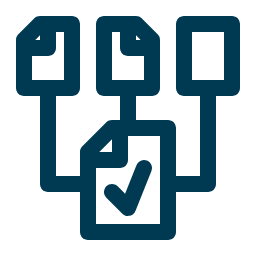
The suite integrates data from various sensors installed on pumps, such as vibration, temperature, flow rate, and pressure sensors. XMPro’s ability to aggregate and interpret this data is key to monitoring pump health and identifying potential issues early.
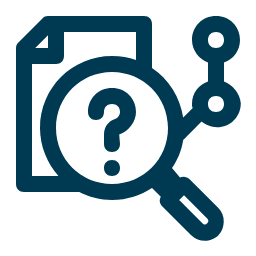
Utilizing machine learning algorithms, XMPro iBOS analyzes historical and real-time sensor data to predict potential pump failures or maintenance needs. This predictive capability allows for proactive maintenance scheduling, reducing downtime and preventing catastrophic failures.
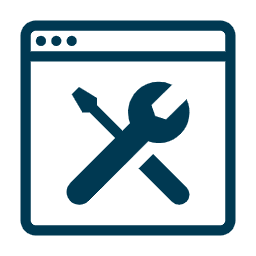
The suite helps optimize maintenance schedules based on actual pump conditions and predictive insights, shifting from a reactive to a proactive maintenance approach.

XMPro iBOS provides real-time monitoring of pump conditions. It can generate instant alerts when parameters like temperature or vibration exceed predefined thresholds, as in the case of an overheating pump.
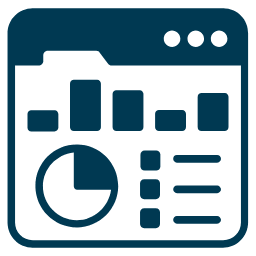
XMPro iBOS includes configurable dashboards that display key pump health data in an easy-to-understand format. These dashboards can be tailored to the specific needs of water utility operators, providing them with actionable insights.

XMPro iBOS is scalable and flexible, capable of adapting to projects of all sizes, from single asset solutions, to comprehensive Common Operating Pictures of multiple asset classes.
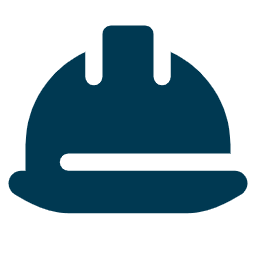
XMPro iBOS provides decision support tools that help prioritize maintenance activities based on the severity and urgency of detected issues.

Utilize XMPro blueprints, pre-configured for pump health monitoring to quickly set up the digital twin dashboard. These blueprints integrate industry best practices, ensuring a swift and effective implementation.
In summary, XMPro iBOS addresses the OEE use case by offering a comprehensive, real-time, predictive, and integrated solution. Its capabilities in creating digital twins, advanced sensor data integration, predictive analytics, and customizable dashboards make it a powerful tool for enhancing the reliability and efficiency of operations in water utilities.
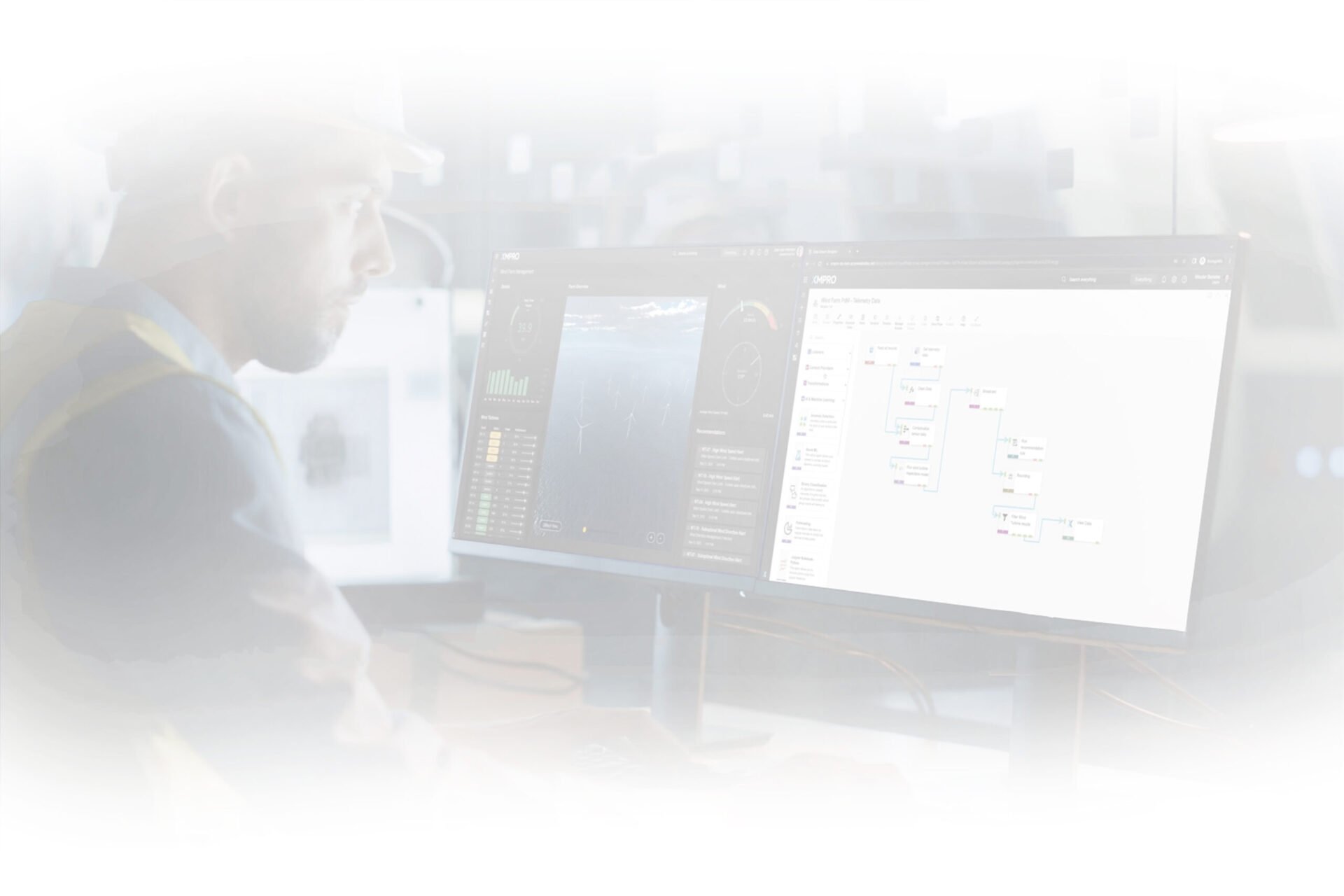
"*" indicates required fields